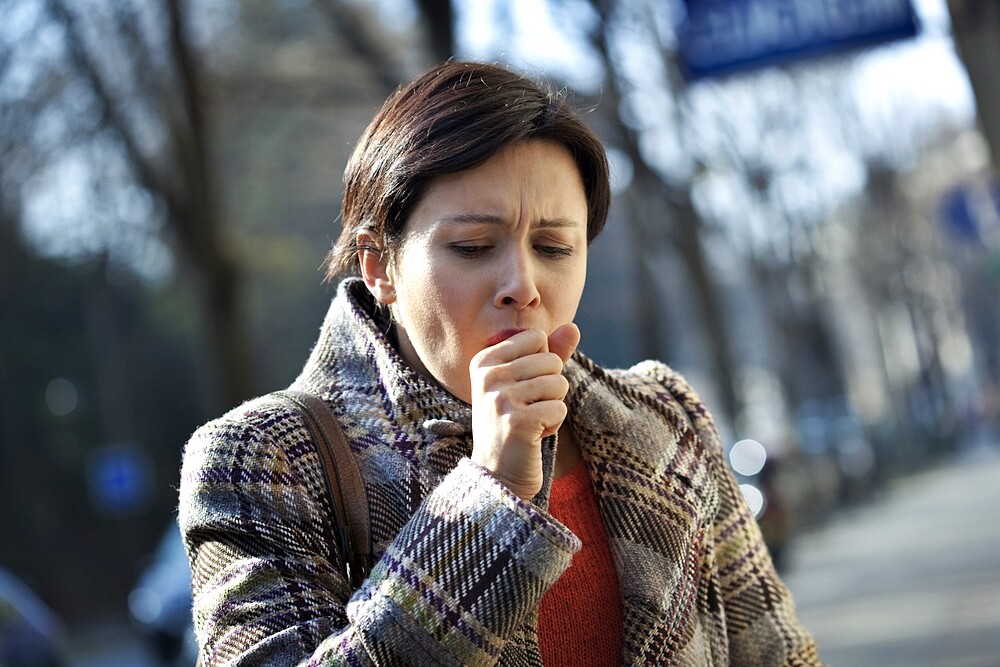Coughing up sputum can be persistent. Here we reveal the reasons for the mucus and how you can get rid of the cough.
What is coughing up sputum?
Coughing up sputum is also called productive cough. The body tries to free the respiratory tract from sputum by coughing. The sputum itself is a secretion produced by the bronchial mucosa, which is actually intended to protect the respiratory tract from drying out and help the body to remove harmful substances. In the case of a respiratory tract infection, for example due to acute bronchitis, increased secretion is produced, which is then transported out of the body by coughing.
What causes and colours can such a cough have?
The colour and consistency of the secretion can vary depending on the disease. We explain here which reasons which secretion can have:
- Coughing up clear or whitish sputum: This cough is usually caused by a viral infection of the respiratory tract, e.g. bronchitis. If a bacterial infection is added, it is called a superinfection – the sputum turns yellowish or greenish. As a rule, the cough usually subsides on its own after a few weeks. After two to three weeks at the latest, or if the secretion changes colour, a doctor should be consulted to prevent a chronic cough. If the sputum is rather tough, especially in the morning, a chronic respiratory disease such as COPD may also be present. At the latest when breathing difficulties occur, a timely visit to the pulmonologist is mandatory.
- Coughing up greenish sputum: Greenish discolored secretion indicates a bacterial infection. Other symptoms are rattling breath sounds and fever. If, for example, a bacterial bronchitis is the trigger, it can develop into pneumonia. In this case, you should see a doctor immediately – the disease may have to be treated with antibiotics.
- Coughing up yellowish sputum: A yellowish discolored sputum also indicates a bacterial infection – this often causes pus to form in the bronchi. Bacteria can settle well on the mucous membranes if they have already been attacked by a viral infection (“superinfection”). If the cough with yellowish sputum persists for more than two to three weeks, a visit to a doctor is advisable.
- Coughing up brownish or blackish sputum: In most cases, such sputum can be attributed to the so-called smoker’s cough, which occurs regularly, especially in the morning. Smoker’s cough occurs, for example, in smokers with chronic bronchitis or COPD. A pulmonologist should check this out promptly!
- Coughing up bloody sputum: A bloody secretion can indicate a serious illness of the lungs, for example an embolism, pneumonia or lung cancer. It can also have comparatively harmless causes such as chronic bronchitis. Sometimes a foreign body lodged in the airways can also cause a bloody cough. In this case, an immediate visit to the doctor is necessary.
Treatment: What helps against the cough?
To get the cough under control, treatment is given according to the cause. More serious and chronic diseases should definitely be treated in consultation with the doctor. If viral or bacterial infections are the triggers for acute symptoms, the main aim is to make coughing up easier. This can be helped, for example:
- Inhalations
- Light tapping on the back
- Drink a lot – this makes the mucus more fluid. Herbal teas with aniseed, thyme or fennel are suitable.
- Herbal expectorants from the pharmacy
You can find even more tips in the article home remedies for coughs.

